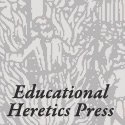The following article appeared in as a guest post in
Heutagogy Community of Practice
http://heutagogycop.wordpress.com/2013/03/04/the-pah-continuum-pedagogy-andragogy-heutagogy/
It follows from Paul Henderson’s mention of andragogy – which some, may not be familiar with.
Fred Garnett has done some amazing work and I’d urge readers to follow up his ideas… they are very much in tune with those at CPE-PEN
The PAH Continuum: Pedagogy, Andragogy & Heutagogy
Guest post by Fred Garnett

In my teaching practice, mostly with socially-excluded kids attempting to get some qualifications in college, I developed a number of techniques for showing them how to be successful on their own terms. College is classically a context in which an andragogic approach works best, where you negotiate with your students to find an agreed learning path. In the department where I worked, at Lewisham College in London, we had developed a universal entry test, followed by an interview, which everyone took. We had found this process to be a better predictor of success that their school results, which usually just measured their dissatisfaction with an education system, which was designed to fail them. We then offered to the prospective student what seemed to be appropriate courses and subjects on which they might be successful.
However, over time, I developed a technique that I now call brokering that was much more about negotiating with the learner in the learning context of the subject that they had chosen. I had started teaching in the USA and one of the aspects of teaching there which I particularly loved was that for any subject that you taught you developed your own syllabus. It went through a quality assurance process so that the University approved what you taught, but you had designed the learning. When I started teaching in England I took it for granted that you would write your own syllabus. Consequently I was soon on all the course committees and before long had written a unit on the social impact of Information Technology, still my favourite course of all the many that I taught.
Writing the syllabus and developing the schedule of delivery along with the work to be completed meant that I was, in effect, building the framework of what I was teaching. Consequently I really understood what the boundaries were and so could better broker between the formal requirements of the education system and the personal desires of my learners; I had found that all these ‘failing’ students wanted to learn. On the social impact course each student picked any technology that interested them to research and write about. I showed them how to “play” with the learning requirements, which can be used as creative constraints, and how best to meet them in their completed work. I also encouraged them to present that work in original ways rather than as just a written report. Although most presented reports a precious few tried original approaches, such as wall charts, cartoons, a class presentation with Q&A, and so on. Most importantly simply having the opportunity to present finished written work in ways that they determined meant that they thought about various ways in which to explain their ideas.
That, in effect, is what we now called the PAH Continuum. Start with a known subject, the delivery of which a teacher is confident with (pedagogy), negotiate with the learners how they might study that subject in ways that motivate them (andragogy), and offer creative ways in which they might express what they have learnt (heutagogy). In my experience what this process, which I call ‘front-loading’ learning, also develops is the confidence in learners to both manage their learning and also to determine what it is they choose to learn. More formally we have presented these ideas as part of a post-Web 2.0 approach to learning that we call the ‘Open context model of learning’, which incorporates many other ideas, in a table called the PAH Continuum. We feel this is a heuristic that can help teachers, lecturers and trainers think about and reflect on how they might their structure the courses, units or subjects that they teach in order to help their learners become more autonomous and purposeful in how they learn
A Schematic of the PAH Contiuum
Pedagogy Andragogy Heutagogy
Locus of Control Teacher Teacher/Learner Learner
Education Sector Schools Adult education Research
Cognition Level Cognitive Meta-cognitive Epistemic cognition
Some consequences of the PAH Continuum
In effect the PAH Continuum is a tool that can help teachers design heutagogic affordances into their practice. Consequently we were very happy to discover that Thomas Cochrane had done exactly this in the Product Design degree course at Unitec Auckland. There it was used as an organising principle to help structure learners’ use of mobile learning technology across the four years of the course programme. Thomas called this ‘bridging learning contexts’ in his article Exploring mobile learning success factors.
When we collaboratively developed the ideas of the open context model of learning, Wilma Clark had pointed out that in Russia the word ‘obuchenie’ means both teaching and learning, and the PAH Continuum might be seen as a way of scaffolding ‘obuchenie’ as a move from teacher’s control to learner’s control. I would see it as axiomatic, as I did when I was ‘brokering’ learning, that teachers, whilst delivering their subject expertise, should be enabling learners to better understand the process of learning for themselves. Nigel Ecclesfield and I tried to capture this in our freely available OER slides called The Craft of Teaching which is now used by a number of educational institutions as part of their teacher training.
One of the institutions that likes this work, and is open to the idea of heutagogy in education, is Salford University, particularly Chrissi Nerantzi in the Post-Graduate Certificate in Academic Practice programme, who publicise their work as @PGCAP. Chrissi has been making a series of films called ‘Food for Thought’ and asked me to discuss how learning is changing and to describe how we might recognise the heutagogic learner. (Oh! I meant to say “learning is doing and reflecting” in the video.)
So the PAH Continuum: thinking about how, when you design learning or develop your teaching or training practice, you can make it open to heutagogy…
Thanks to Ronan O’Beirne, with whom I wrote “e-learning and andragogy” who first introduced me to Hase & Kenyon’s From Andragogy to Heutagogy and said we had to incorporate that work into our own work, from which comment the PAH Continuum eventually emerged. And to everyone who believes in learners generating their own contexts for learning…
ABOUT FRED GARNETT
Fred Garnett blogs on issues relating to heutagogy on The Heutagogic Archive and can be followed on Twitter @fredgarnett. Fred’s current big project is WikiQuals, a project testing ways of using the post-hoc accreditation of learning activities as a way of replacing high-stakes assessment in education systems.









